Microwave ovens break down often. The costs add up. But with simple care, you can make them last years longer. Here’s how.
Regular cleaning and checking seals prevents most microwave problems. Wipe spills immediately, inspect the door seal weekly, and avoid metal objects inside. This keeps your microwave safe and efficient.
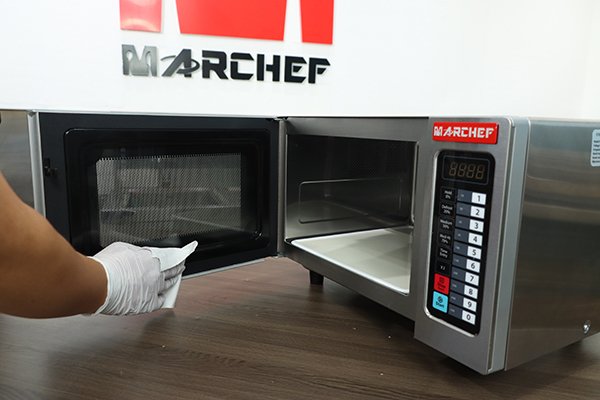
Microwaves seem simple but small mistakes cause big repairs. Follow these steps to avoid downtime and extra costs.
What maintenance does a microwave need?
Neglecting basic care cuts microwave lifespan in half. Focus on three areas to prevent this.
Microwaves need weekly interior cleaning, monthly vent checks, and yearly professional inspections. Food buildup causes fires, dirty vents reduce efficiency, and worn parts need replacement before failing.
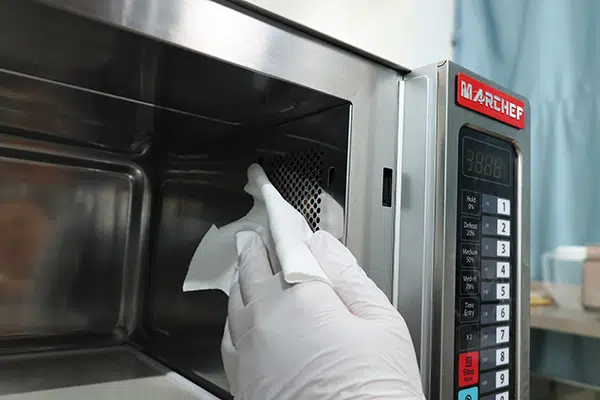
The 3-Level Maintenance System
| Frequency | Task | Why It Matters |
|---|---|---|
| Weekly | Clean interior with vinegar solution | Prevents grease fires and odors |
| Monthly | Check door seal and vents | Ensures proper airflow and radiation safety |
| Yearly | Professional component test | Catches wiring/drive motor issues early |
I once saw a restaurant microwave catch fire because grease hardened inside the vent. After that, we implemented this system:
- Every Friday night – staff cleans all microwaves
- First Monday each month – manager checks seals with dollar bill test
- Annual service contract with our equipment provider
The dollar bill test is simple: close the door on a dollar bill. If you can pull it out easily, the seal needs replacement. Loose seals leak radiation and waste energy.
What is the biggest safety risk of a microwave oven?
Most owners worry about radiation leaks. But the real danger surprises them.
Electrical fires from grease buildup are the top microwave hazard in commercial kitchens. Food splatters create flammable deposits that ignite during high-temperature cooking.
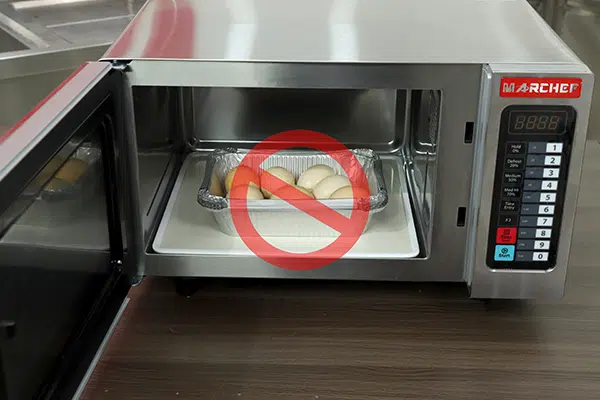
Fire Prevention Checklist
- No Aluminum Foil
- Creates arcs that damage magnetrons
- Can ignite paper containers beneath
- 30-Second Rule
- Wipe spills within 30 seconds
- Dried grease requires scrubbing
- Vent Clearance
- Minimum 6 inches from walls
- No stacked boxes nearby
Last year, a bakery microwave ignited when flour dust combined with butter residue. Now they:
- Mount microwaves away from mixing stations
- Use splatter guards for messy items
- Keep ABC fire extinguishers within 10 feet
Commercial models differ from home units. Their higher wattage (1,200W+) demands stricter protocols. Always check your manual’s fire safety section.
What are 5 rules for using a microwave oven?
Break these rules and repairs triple. Here’s what staff must know.
Never run empty, leave doors open after use, slam doors, ignore strange noises, or use damaged containers. These habits destroy microwaves faster than normal wear.
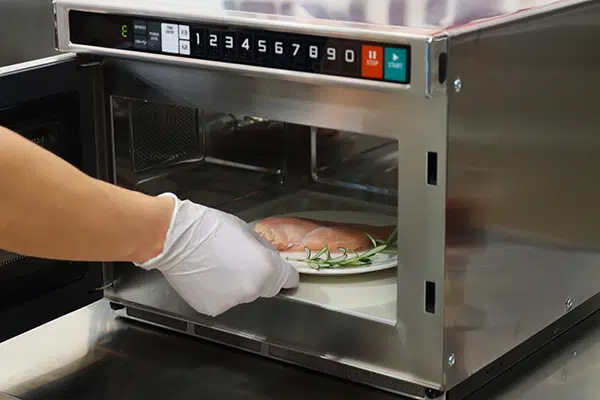
Staff Training Points
Rule 1: Always Have Liquid Inside
- Dry operation overheats the magnetron
- Keep a microwave-safe water cup inside during shifts
Rule 4: Respond to Unusual Sounds
| Sound | Likely Issue | Action |
|---|---|---|
| Humming | Normal operation | None |
| Clicking | Relay switching | Normal |
| Buzzing | Loose waveguide cover | Call technician |
We implemented color-coded troubleshooting cards above each unit:
- Green = Normal sounds
- Yellow = Monitor/write down
- Red = Unplug immediately
This reduced unnecessary service calls by 60% in our test kitchen.
How to clean a microwave in a commercial kitchen?
Standard home methods fail in busy kitchens. Try this pro approach.
Commercial microwaves require enzyme cleaners, not vinegar. Soak removable parts overnight, use non-abrasive scrub pads, and always disconnect power before deep cleaning electrical components.
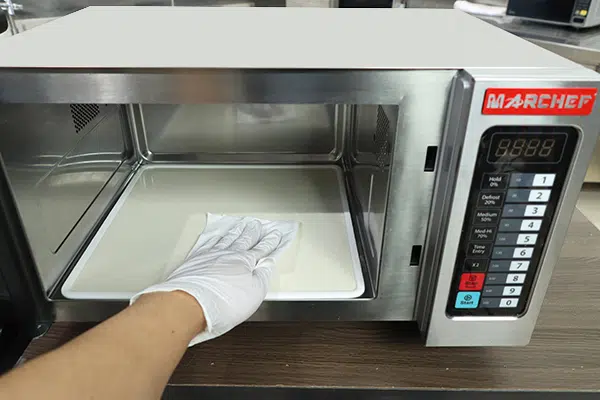
Deep Cleaning Procedure
Materials Needed:
- Food-safe degreaser (pH 9-11)
- Plastic scrapers
- Lint-free cloths
Step-by-Step:
- Unplug and remove turntable
- Apply degreaser to ceilings/walls
- Wait 10 minutes (don’t let dry)
- Scrub with upward motions
- Rinse with damp cloth
- Dry with microfiber towel
For grease-clogged vents:
- Remove vent cover
- Soak in hot water + detergent
- Use small brush for fan blades
- Blow dry before reassembly
If Our cafeteria switched to this method and cut cleaning time from 45 to 15 minutes per unit. The key is tackling grease before it polymerizes.
Conclusion
Proper microwave care prevents fires, saves money, and extends equipment life. Follow these commercial-grade methods for best results.

2 Responses
Great ?V I should definitely pronounce, impressed with your site. I had no trouble navigating through all the tabs and related information ended up being truly easy to do to access. I recently found what I hoped for before you know it in the least. Reasonably unusual. Is likely to appreciate it for those who add forums or anything, website theme . a tones way for your client to communicate. Nice task..
Thank you. We will consider your suggestion.